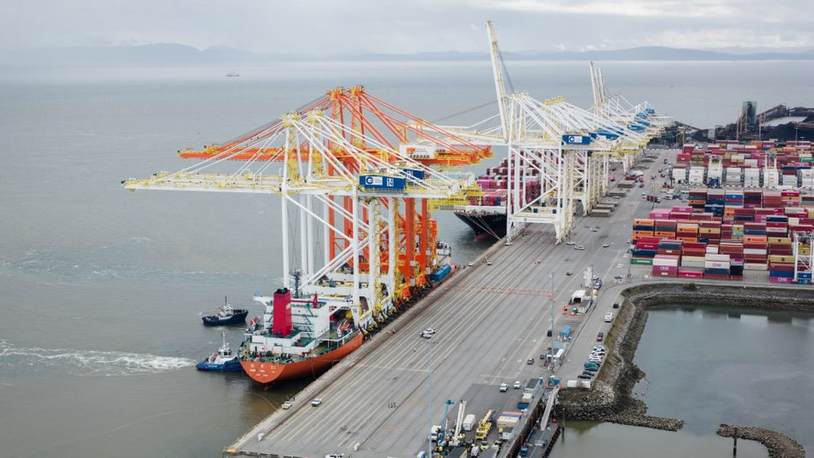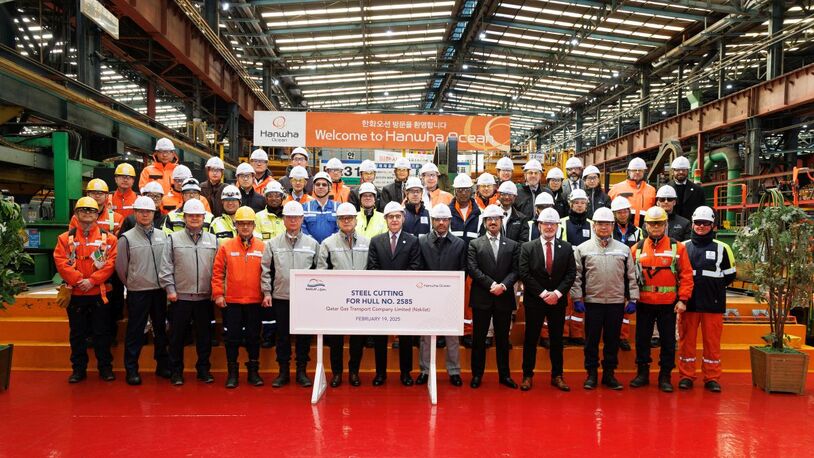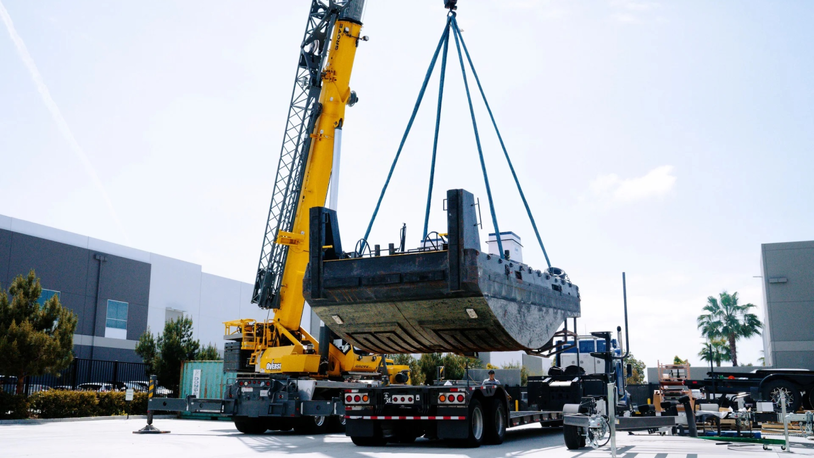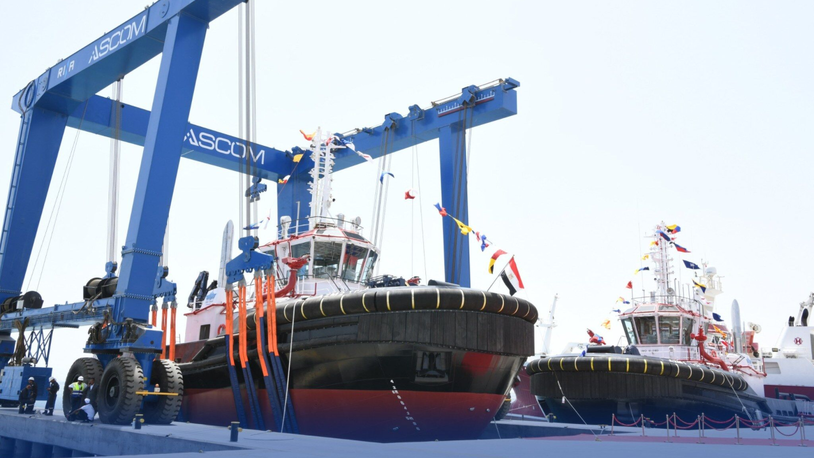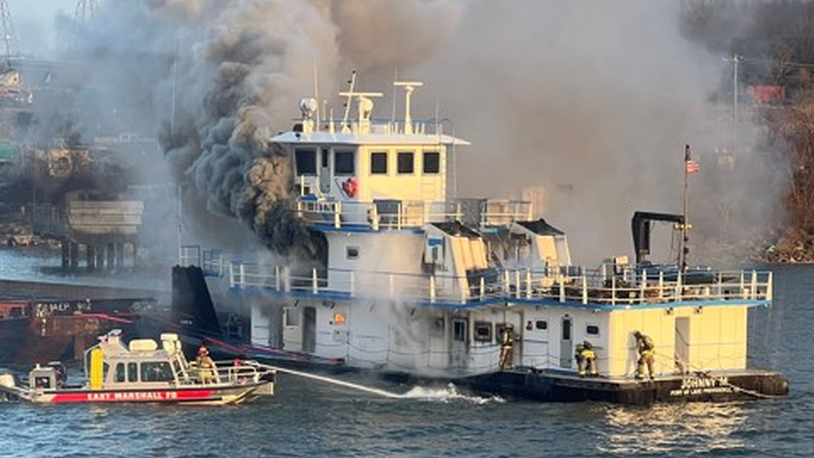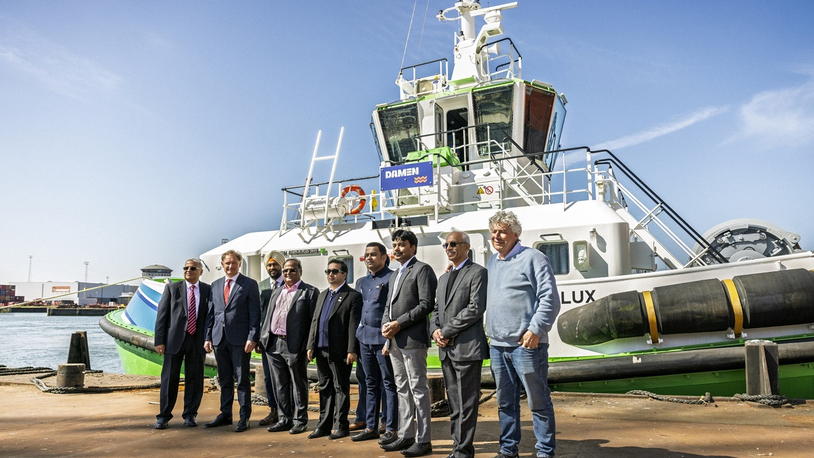Business Sectors
Events
Contents
Coatings research meets specific sector challenges
Although tugs generally operate in defined, localised areas, the demands placed on the hulls of these ships can be greater than those of larger vessels on deepsea routes. Abrasion from contact with other ships, tugs’ generally long life expectancy and the fuel consumption of their relatively large engines, which are needed to provide high peak power levels, are all factors that must be considered when selecting a tugboat coating.
Anchor handlers and tugs operating offshore tend to have more idle periods than vessels in other sectors, and so need faster polishing antifouling systems. Tug decks may also need more abrasion-resistant epoxy coatings because of exposure to mechanical impacts.
Otherwise, tug owners and operators have many of the same key requirements with regard to coatings as other sectors of the shipping industry, which has come under increasing pressure to comply with tough new environmental regulations.
Amendments adopted in 2011 to Annex VI of the Marpol Convention set mandatory measures to reduce emissions of greenhouse gases from international shipping. More specifically, the amendments to the Energy Efficiency Design Index (EEDI) and the Ship Energy Efficiency Management Plan (SEEMP) that came into force on 1 January 2013, as well as the introduction of lower sulphur emission limits on 1 January 2015, have forced all ship operators to focus on protecting the environment, as well as on achieving fuel savings. Coatings performance represents a key element in companies’ strategies for achieving compliance.
Michael Aamodt, global product manager at Hempel, says: “These environmental demands have been a key influencer for innovation and technological advancement within the marine coatings sector. There is a greater demand for antifouling products with lower volatile organic compounds (VOCs), higher solids and fewer harmful biocides.”
Over the past four years, Denmark-based Hempel has been involved in more than 250 newbuilding and 60 drydocking projects for tugs. The main marine coatings products that have been selected by tug owners, operators and their shipyards are antifoulings such as Oceanic, Oceanic+, Olympic+ and Globic NCT, underlining the drive towards fuel efficiency and environmental protection.
In recent times, Hempel has launched a number of other products that it considers to be highly suitable for tugs. Mr Aamodt says: “The current environment, where ship operators are under constant pressure to keep operating and fuel costs down, is also applicable to tug operators. The choice of a marine coating can have a significant impact on the performance and efficiency of a tug.”
Hempel’s Hempaguard hull coating, which was launched in 2013, is said to have shown an outstanding resistance to fouling during idle periods, providing significant fuel savings. The coating was over five years in development and is based on Hempel’s patented ActiGuard technology.
Hempaguard integrates silicone-hydrogel and full diffusion control of biocides in a single coating. Mr Aamodt says: “Surface retention of the biocide activates the hydrogel, which effectively holds fouling organisms at bay, cutting friction to a minimum while utilising a minimum amount of biocide. It also has the long-term stability and mechanical properties required of a durable solution.”
Hempaguard is available in two formulations, for docking intervals of 36 and 90 months respectively. It is recommended for all ship types whose owners wish to benefit from fuel savings, and for fouling defence at any speed or during idle periods of up to 120 days.
Hempel is continuing to develop new products based on the ActiGuard technology. These include Hempaguard X5, which offers fouling defence for up to 36 months and guaranteed fouling resistance for up to 60 idle days, and Hempaguard X7 which is formulated to provide up to 90 months of fouling defence for any type of vessel and for extended idle times.
In addition, last December Hempel launched two antifouling products, Globic 8000 and Dynamic 8000, designed to deliver fuel savings of up to 3 per cent and provide added flexibility for both shipowners and yards. Globic 8000 is a hydrolysing self-polishing antifouling product that Hempel claims can deliver high levels of performance at a reasonable price.
“Globic 8000 can be used on all vessels at all speeds but its nano acrylate technology binder, which uses nano capsules to control polishing, makes it particularly effective for slow steaming operations because of its instant activation of polishing and biocide leaching,” says Mr Aamodt. “Dynamic 8000, on the other hand, was developed to give an outstanding antifouling service at higher speeds, utilising silylated acrylate technology.
More recently, in March this year, Hempel launched Hempadur Quattro XO, a range of pure epoxy coatings for newbuildings that are compliant with IMO’s performance standard for protective coatings (PSPC). Although this coating was specifically developed for ballast water tanks in new vessels, it can also be used as a universal primer for most vessel areas, above and below the waterline.
Akzo Nobel’s marine coatings brand, International Paint, is another of the market leaders in this sector and reports that its most popular coatings for tug protection and performance, at both newbuilding and maintenance/repair stages, are Intershield 300, Intershield 163 Inerta 160 and Intersmooth SPC. The company says these products are ideally suited to the demands of the working tugboat.
Intershield 300 is an abrasion-resistant, aluminium pure epoxy coating that can be applied to various vessel areas over mechanically prepared shop primer. It offers long-term asset protection and control of corrosion and lifetime maintenance costs. The recently launched Intershield 300HS is a high volume solids version of this technology that can be applied straight from the tin without the need for thinning.
For tugs operating in ice, Intershield 163 Inerta 160 is claimed to offer up to 2.5 times the impact and erosion resistance of standard epoxy coatings. The coating’s coefficient of friction has been measured and compared to a traditional anticorrosive system and corroded steel with a measured surface roughness of 100 microns. These tests demonstrated that it is possible to achieve an annual fuel saving of 7-10 per cent for a vessel operating in the Baltic region, if the vessel is coated with Intershield 163 Inerta 160 compared with a standard coating system.
Because of their operating profile, tugs are particularly prone to attack by fouling organisms. A spokesman for AkzoNobel’s marine business points out: “Fouling organisms vary around the world in their type, composition and intensity. Tugs, typically operating in coastal waters, have to contend with all types of global fouling challenge and biocidal antifoulings are the tug boat product of choice.”
In this context International Paint notes that it is achieving considerable success in this market with Intersmooth 360 SPC, a pure self-polishing copolymer antifouling specifically designed for coastal vessels. Featuring high volume solids, low VOCs and a fast polishing rate, the copper acrylate technology is formulated to deliver a controlled chemical dissolution of the paint film, which ensures continued smoothing over long drydocking intervals and constant release of regulated biocides. Predictable polishing rates enable the coating’s specifications to be tailored to specific operational profiles, while thin leached layers allow simple cleaning and recoating at drydockings, the company states.
Also tackling the fouling issue, another marine coatings supplier, PPG, has in recent times launched Sigmaglide 1290, a silicone binder fouling release system that uses dynamic surface regeneration technology to eliminate slime problems and increase fuel savings compared with existing fouling release products.
PPG has a track record of involvement with tug projects, working with Svitzer, for example, on its EcoTug initiative. For these tugs Svitzer chose PPG’s high-efficiency, low-maintenance coating, Sigmaglide 990, a product that is completely biocide free that helped the company meet its environmental performance goals.
A relatively new product which is now targeting the tug and workboat sector is the Duplex silicone fouling release coating that was originally developed by the US Navy and is now being manufactured by a division of Fujifilm Corp, Fujifilm Hunt Smart Surfaces. When the Duplex silicone finish is applied to hulls it creates a slippery surface that causes organisms to be released more easily than with alternatives. According to the company bio-foulants can be removed with a simple waterjet with light pressure and the system is self-cleaning with a constant water flow at speeds as low as 8 knots, compared with a more normal rate of 15 knots.
Duplex has been used on a number of tugs including Patriarch, operated by Crowley Maritime in the USA. After five years in service, the tug is reported to have shown excellent results at drydocking.
Conventional antifouling and foul-release coatings are not always suitable for ice-going ships, as they do not provide adequate protection for the hull and the impact and abrasion of the ice soon damages or removes them.
Marketed by Belgium-based Hydrex, Ecospeed has been recognised by Lloyd’s Register as an abrasion-resistant coating for ships, including tugs, intending to navigate in ice conditions. According to Hydrex, experience has shown that Ecospeed stays on the hull longer and resists the ice far better than the most generally used specialised ice coatings. The glass flake reinforced coating uses a different resin than other specialised coatings for ice conditions, which means that it remains bonded to the ship’s plates even as they flex and bend under ice pressure and impact.
Company spokesman Christophe Verhoeven says: “Ecospeed is perfectly suited for tugs operating in ice waters, and several vessels of this type are now sailing with the coating on their hulls.” Examples include Ocean Tundra, Canada’s most powerful tug that was launched by the Ocean Industries group in 2013, and another of the same company’s firefighting tugs, Ocean Raymond Lemay.
Mr Verhoeven concludes: “Ecospeed will hold up and will not be damaged in the ice and so will remain smooth for the life of the vessel, thus saving fuel. Even if minor repairs are needed in drydock, they blend in perfectly, leaving the hull smooth and fuel efficient.”
Related to this Story
Events
Maritime Environmental Protection Webinar Week
The illusion of safety: what we're getting wrong about crews, tech, and fatigue
Responsible Ship Recycling Forum 2025
© 2024 Riviera Maritime Media Ltd.


